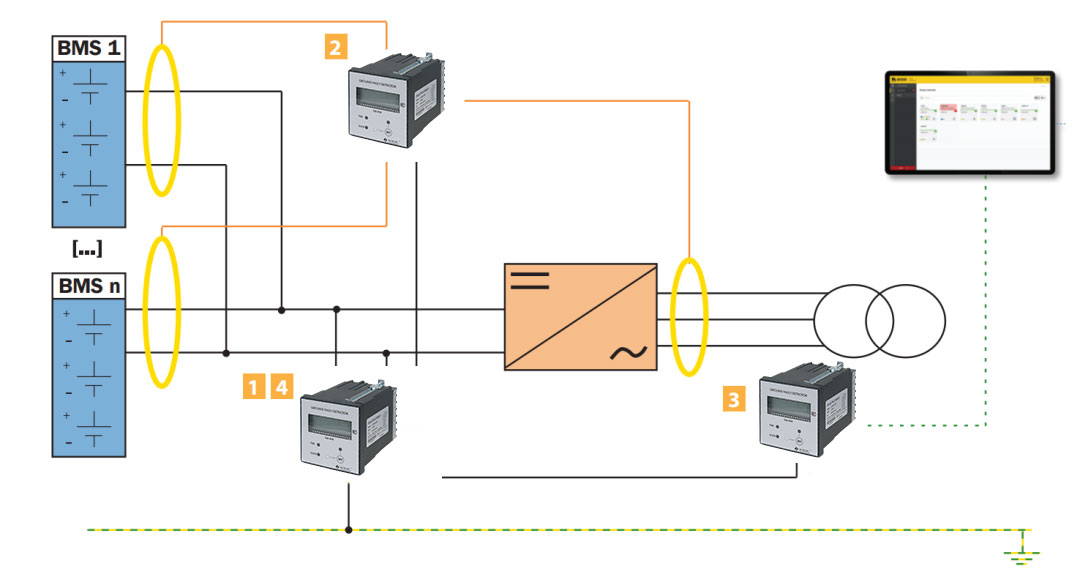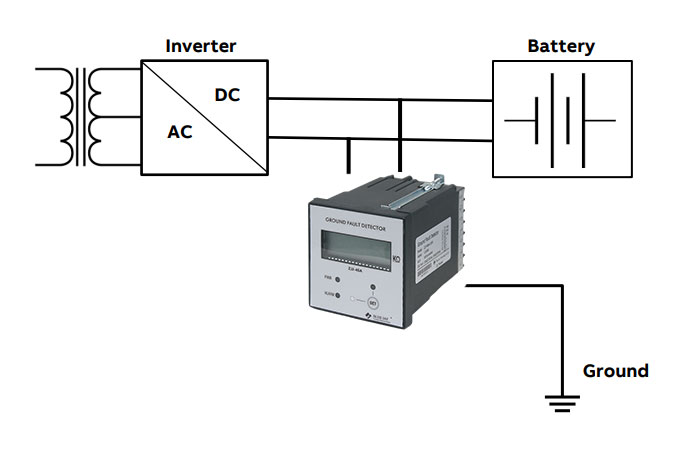Battery energy storage systems (BESS) are typically ungrounded systems, meaning that all circuit conductors are isolated from the ground. Although these systems can continue to operate despite a single single-phase ground fault, indicating and clearing the first insulation fault as quickly as possible is critical to maintaining system safety. If the fault is not cleared, a phase-to-phase short circuit may occur on a second fault. Blue Jay’s Insulation Monitoring Devices (IMD) will provide advance notification of the first fault condition, allowing time to properly identify and clear the fault before a catastrophic problem occurs. Blue Jay offers a wide range of IMDs for BESSs of nearly all sizes, from small-scale deployments to large-scale utility-scale systems.

Why Insulation Monitoring Is Needed In Battery Energy Storage Systems?
The BESS is Ungrounded Energy Storage Systems that face reduced protection against ground faults. To enhance safety, Insulation Monitoring Devices (IMDs) monitor earth leakage, detecting undesired leakage values before faults occur. This real-time monitoring helps identify insulation deterioration promptly.
How IMD Works In Battery Energy Storage System?
IMDs (Insulation Monitoring Devices) superimpose a test signal to measure the insulation resistance to the ground. A specific resistance threshold is established, and IMDs identify values that fall outside this threshold. This allows for the detection of potential issues related to ground resistance.

Advantages Of Configuring Insulation Monitors In Battery Energy Storage Systems
- Minimize system downtime – Electrical issues can be detected and located while keeping the installation fully powered.
- Improved safety – Ground fault location of battery packs and modules minimizes battery fire risk (quick repair).
- Automatic fault location – Automatic fault location provides remote diagnostic tools that eliminate the need for a technician to be on-site during a fault.
- Reduced Maintenance Costs – Maintenance costs are significantly reduced due to detection accuracy and reduced need for human interaction.
Why Insulation Monitoring And Not Residual Current Devices In Energy Storage System?
Insulation monitoring and residual current devices (RCDs) serve distinct purposes in ensuring the safety of energy storage systems (ESSs). Insulation monitoring focuses on detecting potential insulation faults and deterioration, aiming to prevent faults before they occur. It monitors the insulation resistance to ground and alerts if values deviate from established thresholds.
On the other hand, residual current devices, or ground fault circuit interrupters (GFCIs), are designed to rapidly disconnect power in the event of a ground fault. They detect imbalances in current between the live and neutral conductors, protecting against electric shocks.
In an energy storage system, both insulation monitoring and RCDs can complement each other for comprehensive safety. Insulation monitoring helps identify insulation issues, while RCDs act swiftly to disconnect power during ground faults. The combination of these technologies enhances overall safety by addressing different aspects of electrical system integrity.



